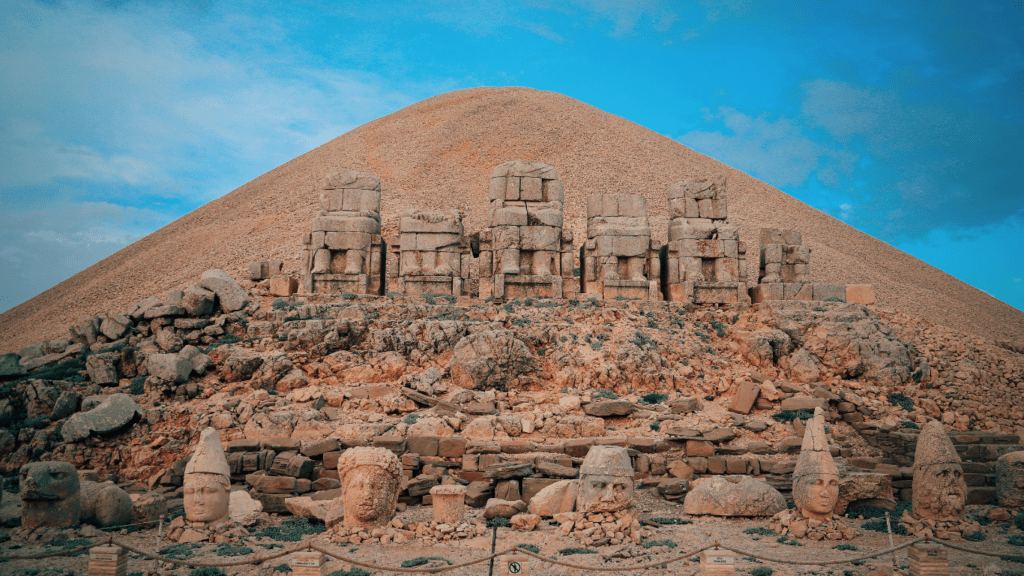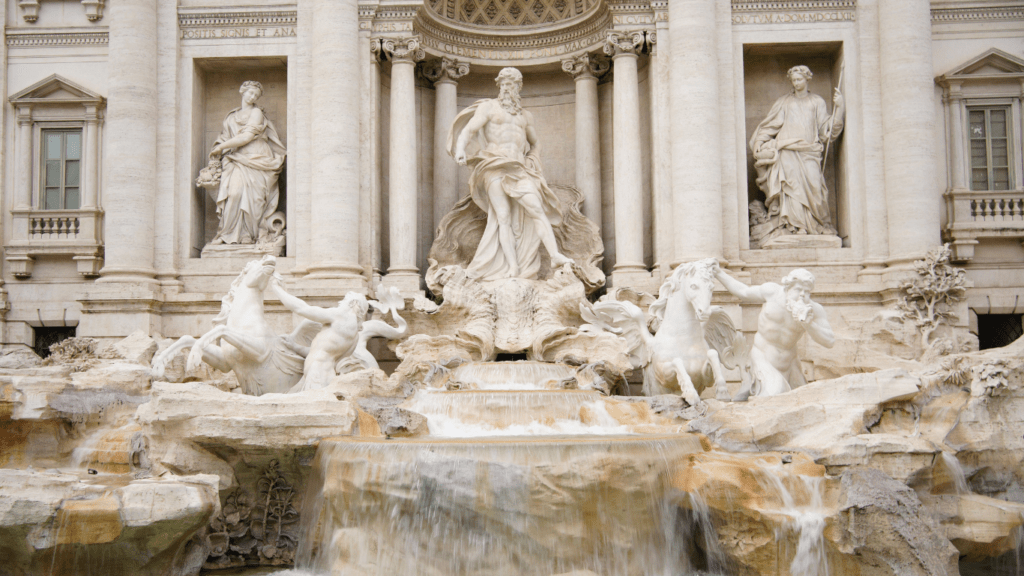The Significance of Sculpture in Human History
Sculptures have played a fundamental role in human history, serving as markers of cultural development, religious expression, and societal values. Ancient civilizations like Egypt and Greece used sculptures to honor deities and commemorate significant events.
For instance, the Great Sphinx of Giza, dating back to 2500 BCE, represents both artistic achievement and religious significance in ancient Egyptian society.
During the Renaissance, sculptures took on new dimensions, reflecting humanist ideals and a renewed focus on realism. Michelangelo’s David, completed in 1504, exemplifies this shift with its anatomical precision and portrayal of human beauty.
Sculptures from this period often depicted religious subjects, but they also began to explore secular themes, showcasing the evolving human experience.
In modern times, sculptures continue to influence and shape our understanding of art and culture. Artists like Auguste Rodin and Henry Moore pushed the boundaries of traditional sculpture, incorporating abstract forms and unconventional materials.
Rodin’s The Thinker, created in 1902, embodies philosophical musing, while Moore’s works emphasize organic shapes and the interplay of space and mass.
Sculptures not only reflect the zeitgeist of their creation periods but also provide a tangible connection to our past. They reveal much about the technological advancements, economic conditions, and social structures of the times in which they were made.
By studying these remarkable works, we gain insights into the aspirations and challenges faced by those who came before us.
Famous Sculptures From Ancient Times

Ancient sculptures display remarkable craftsmanship and provide vast historical insights. These sculptures often symbolize cultural significance.
The Great Sphinx of Giza
The Great Sphinx of Giza, Egypt’s colossal limestone statue, guards the Giza Plateau. It features a lion’s body and a human head, representing Pharaoh Khafre. Constructed around 2500 BCE, the Sphinx stands 240 feet long and 66 feet high.
This monument signifies royal power and is associated with several ancient Egyptian myths.
The Terracotta Army
- China’s Terracotta Army, an astonishing archaeological discovery, consists of thousands of life-sized clay soldiers.
- Located near the tomb of Emperor Qin Shi Huang, the terracotta figures date back to 210 BCE.
- Each soldier possesses unique facial features and attire, illustrating the meticulous detail involved.
These sculptures aimed to protect the emperor in the afterlife and showcase the grandeur of the Qin Dynasty.
Masterpieces of the Renaissance Era
The Renaissance era produced some of the most iconic sculptures, reflecting humanist ideals and unparalleled artistic skill. Two notable works by Michelangelo exemplify this brilliance.
Michelangelo’s David
Michelangelo’s David, created between 1501 and 1504, stands as a symbol of strength and youthful beauty. Located in Florence’s Galleria dell’Accademia, it’s a 17-foot-tall marble statue depicting the biblical hero David.
The statue showcases David moments before his battle with Goliath, highlighting every muscle and tendon with incredible precision. This masterpiece exemplifies the Renaissance focus on human anatomy and classical beauty.
The Pietà by Michelangelo
The Pietà by Michelangelo, completed in 1499, resides in St. Peter’s Basilica in Vatican City.
- This sculpture portrays the Virgin Mary cradling the dead body of Jesus after his crucifixion.
- Carved from a single slab of Carrara marble, the Pietà captures deep emotion and delicate detail.
- Mary’s serene expression contrasts with the lifeless form of Jesus, emphasizing the Renaissance ideals of beauty, realism, and human sorrow.
This work cemented Michelangelo’s reputation as a master sculptor.
Iconic Modern Sculptures
Modern sculptures continue to break boundaries, creating lasting impressions worldwide. Here are two sculptures that have become icons of modern art.
The Thinker by Auguste Rodin
Auguste Rodin’s “The Thinker” symbolizes deep contemplation and introspection. Sculpted in 1902, it stands 6 feet tall and depicts a man lost in thought, seated with his chin resting on his hand.
Rodin initially designed this piece as part of a larger work called “The Gates of Hell.” This sculpture appears in various collections globally, with the original residing in the Musée Rodin in Paris.
The bronzed figure’s powerful physicality and emotional depth revolutionized modern sculpture techniques and remains a testament to Rodin’s legacy in the art world.
Chicago Picasso
The “Chicago Picasso” stands as a hallmark of abstract public art. Unveiled in 1967 at the Daley Plaza in Chicago, this 50-foot-tall sculpture made of Cor-Ten steel represents Picasso’s departure from conventional forms.
Though the sculpture’s subject remains ambiguous, interpretations often suggest it depicts an animal or a woman’s face. Picasso gifted his first large-scale public work to the city, influencing urban sculpture significantly.
This piece, designed without a specific title or narrative, invites viewers to engage with it differently, from varied perspectives and conceptual angles.
Factors Influencing the Fame of Sculptures
Several factors contribute to the fame of sculptures, impacting their recognition and cultural significance globally. Historical context, artistic innovation, and notable patrons play crucial roles in elevating certain works above others.
Historical Context
The era in which a sculpture is created significantly affects its fame. For instance, Michelangelo’s “David” embodies the Renaissance celebration of human anatomy and classical ideals, while Rodin’s “The Thinker” reflects modern philosophical introspection.
Sculptures from pivotal historical moments often gain greater recognition due to their cultural resonance with contemporaneous events.
Artistic Innovation
Innovation in technique and material enhances a sculpture’s notoriety. Bernini’s dynamic use of marble in “Apollo and Daphne” demonstrated unprecedented motion and emotion in stone.
Similarly, Picasso’s integration of cubism in “Chicago Picasso” revolutionized public art by blending abstract forms with everyday structures. When sculptors push boundaries, their work often garners lasting acclaim.
Patronage and Sponsorship
Prominent patrons or institutions often elevate sculptures to fame. The Medici family’s support of Renaissance artists, including Michelangelo, significantly bolstered the visibility and prestige of their commissioned works.
In modern settings, corporate sponsorships and public commissions, like the “Chicago Picasso,” ensure widespread exposure and integration into cultural consciousness.
Public and Critical Reception
Public engagement and critical acclaim amplify a sculpture’s fame. When sculptures like “The Thinker” are showcased in popular locations and receive extensive coverage, they become ingrained in the public imagination.
Exhibitions, media coverage, and academic discourse all contribute to a sculpture’s enduring fame. Positive reception from critics and historians further cements a sculpture’s place in art history.
Cultural Symbolism
Sculptures that symbolize cultural or political ideologies often achieve greater fame. The Statue of Liberty represents freedom and democracy, making it a global icon. Similarly, the “Christ the Redeemer” statue in Brazil serves as a powerful religious symbol.
When sculptures embody significant cultural narratives, they resonate more deeply with a wide audience.


